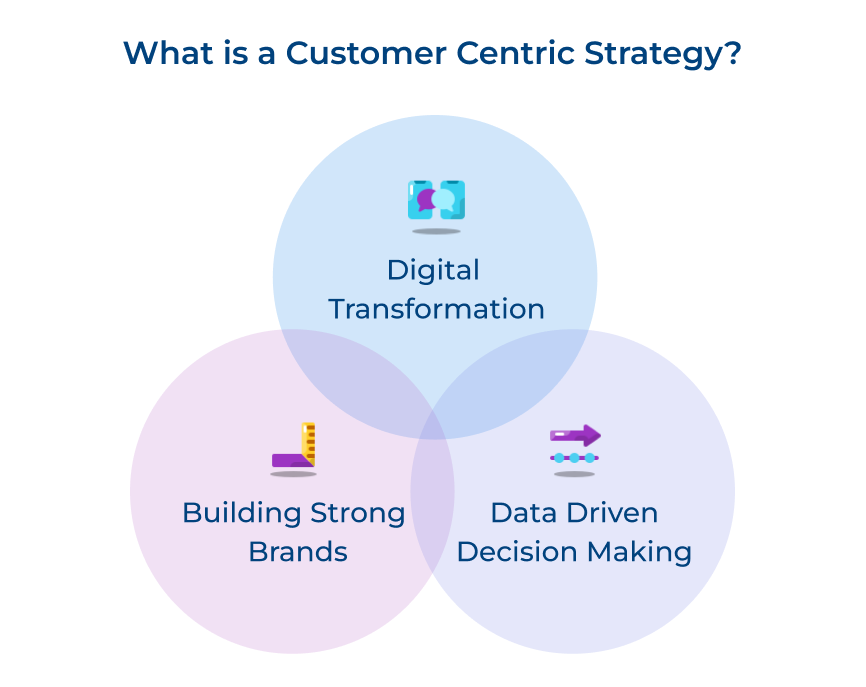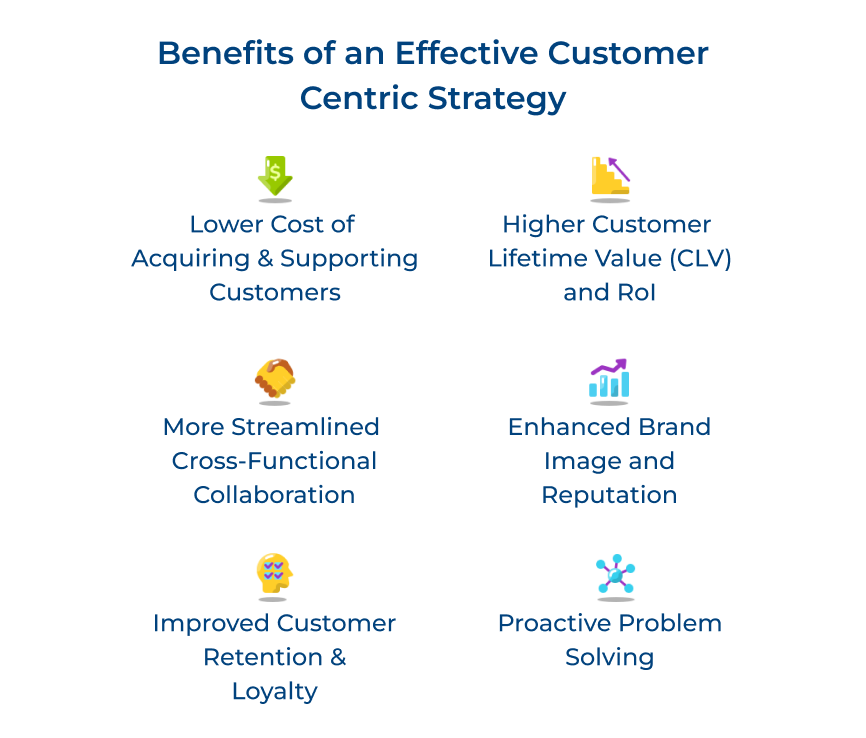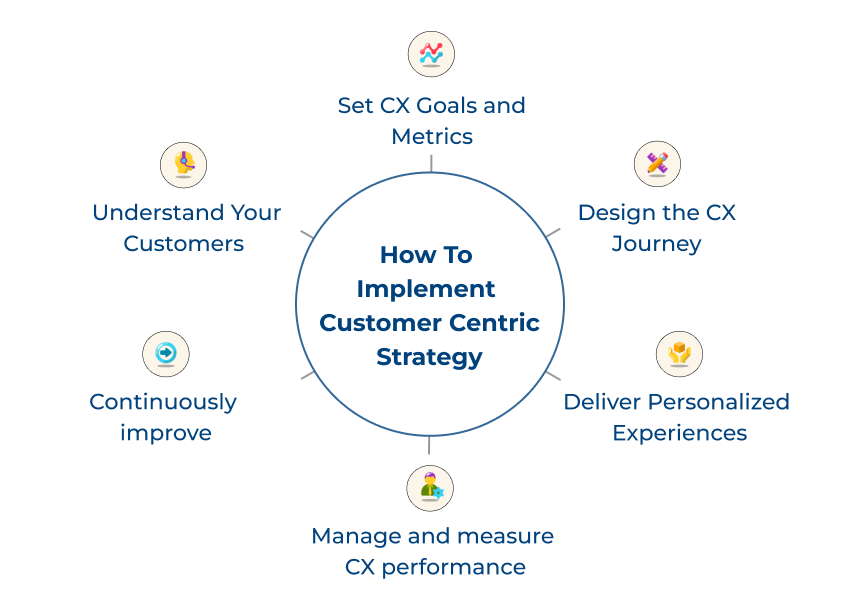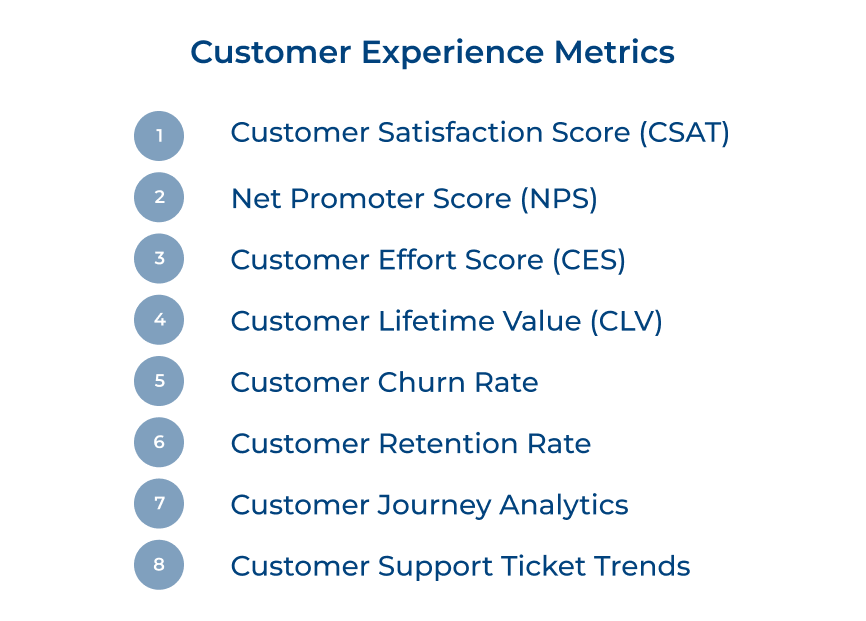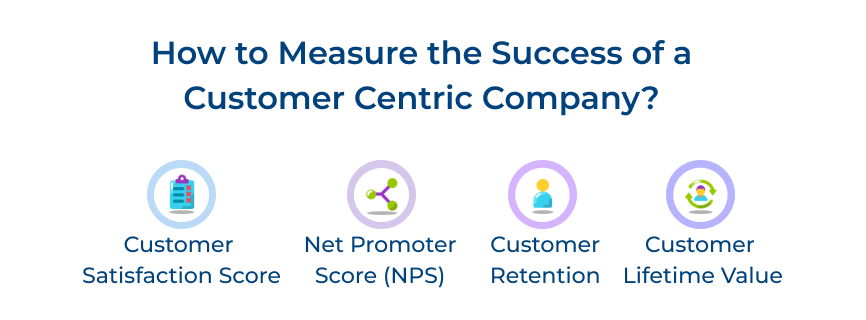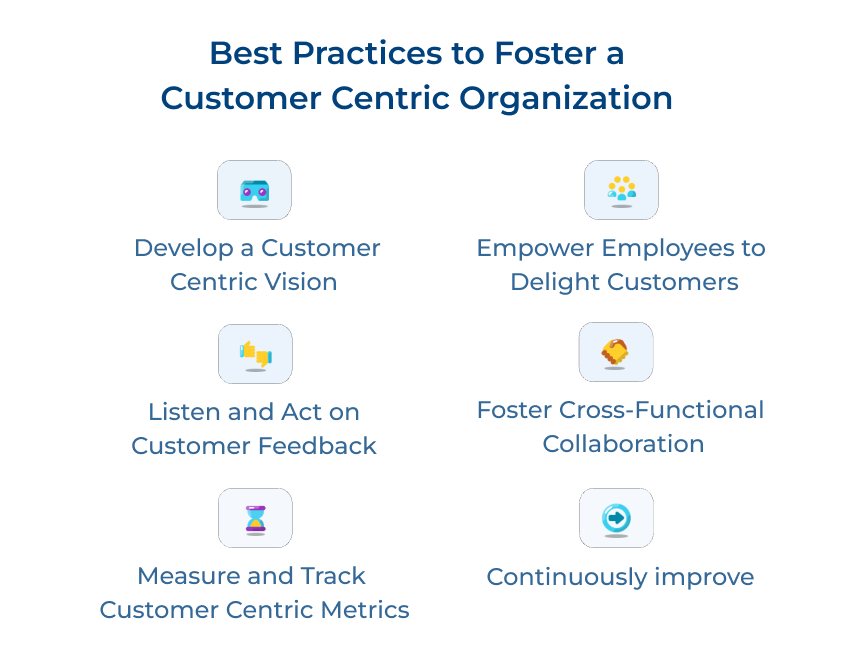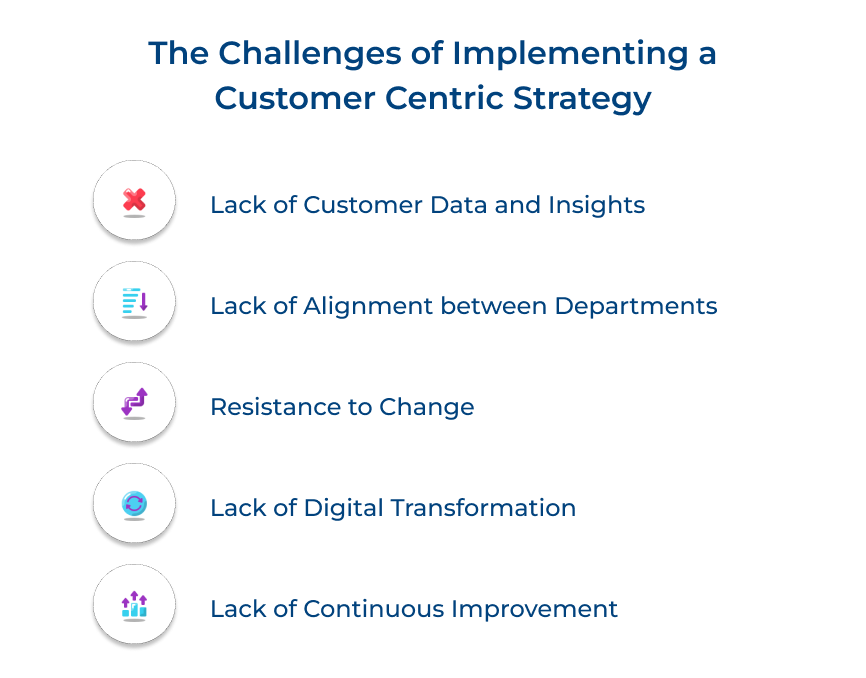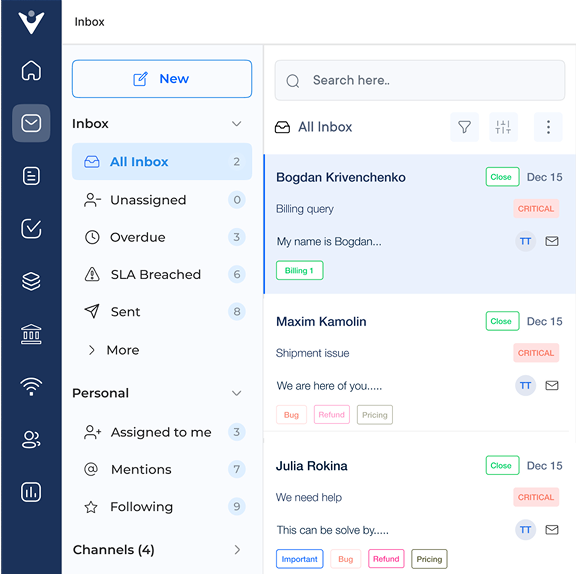1. Develop a Customer-Centric Vision
Building a customer-centric culture starts with leadership and setting a strong example. Leaders should consistently communicate the importance of customer satisfaction and prioritize customer first approach throughout the organization. Create a culture that encourages empathy, active listening and a deep understanding of customer needs. Incorporate customer-centricity into performance evaluations, recognition programs, and training initiatives.
Imagine there’s a retail company that has a customer-centric vision of being the most customer-focused retailer that provides personalized experiences and exceeds customers’ expectations. They will consistently strive to build strong, lasting relationships with their customers, delivering exceptional service at every touchpoint. Communicating it throughout the organization will help all the employees understand the importance of their roles in delivering exceptional customer experiences.
2. Empower Employees to Delight Customers
Empowering employees is essential to establishing a customer-centric culture. Initiate training and development programs to enhance the knowledge of the employees. Encourage autonomy and decision-making authority at the front lines. It will enable your workforce to take ownership of customer interactions and make on-the-spot decisions. Make sure to recognize and reward employees who consistently go above and beyond to exceed customer expectations.
Consider a telecommunications company that empowers its customer service representatives to exceed customer expectations. The representatives are trained to actively listen to customers, empathize with their concerns, and provide personalized solutions. They are given the authority to prioritize customer satisfaction, such as waiving fees or providing additional benefits.
3. Listen and Act on Customer Feedback
Implement a multi-channel feedback collection system that captures customer sentiments throughout the customer journey. Categorize feedback to identify recurring themes, pain points, and areas for improvement. Regularly communicate customer feedback across departments, encouraging collaboration to address issues and implement solutions. Use feedback to catalyze continuous improvement, product innovation, and process optimization.
Let’s take the example of an enterprise that collects and analyzes customer feedback from various sources. Through sentiment analysis and categorization, they identify recurring pain points. They come across a common complaint about slow delivery times and take steps to optimize their logistics processes. When they actively listened to customer feedback and implemented changes based on those insights, the company demonstrated its commitment to continuously enhancing the customer experience.
4. Promote Cross-Functional Collaboration
Break down organizational silos and facilitate cross-functional collaboration to deliver a consistent customer experience seamlessly. Create platforms for regular communication and knowledge sharing among your departments. Establish a culture of transparency and cooperation, where teams work together to meet customer expectations.
Imagine there’s a software company that facilitates cross-functional collaboration by implementing a customer journey mapping initiative. They used collaborative workshops to identify touchpoints, pain points and opportunities for improvement.
They discover that customers face challenges when integrating the software with other tools. The cross-functional collaboration will ensure all departments align their efforts toward delivering exceptional customer experiences.
5. Measure and Track Customer-Centric Metrics
Implement comprehensive customer-centric metrics to assess organizational performance and drive continuous improvement. Establish key performance indicators (KPIs) that directly reflect customer satisfaction, loyalty, and advocacy. Make sure to use data-driven insights to identify trends, patterns, and opportunities for enhancement.
Assume there’s a hospitality chain that regularly measures and tracks customer centric metrics to gauge its performance. They analyze customer satisfaction scores through post-stay surveys and monitor their Net Promoter Score (NPS) to assess loyalty. They notice a decline in customer satisfaction in one of their locations and take immediate action by conducting thorough staff training programs to address service gaps.
6. Develop a Customer-Centric Culture
Building a customer-centric culture starts with leadership and setting a strong example. Leaders should consistently communicate the importance of customer satisfaction and prioritize customer-centric values throughout the organization. Create a culture that encourages empathy, active listening and a deep understanding of customer needs. Incorporate customer-centricity into performance evaluations, recognition programs, and training initiatives.
Take a clothing retail company as an example here. Imagine they established a customer-centric culture by implementing a “Customer First” initiative. The CEO regularly communicates the importance of putting customers at the center of all decisions and actions. The company conducts workshops to instill empathy and active listening skills among employees.
Examples of Customer Centricity Approach
Focusing on customer needs can enable businesses to gain a competitive advantage and ensure long-term success. Following are some real-life examples to understand the impact and potential of custom-centric strategy:
- Amazon: Amazon is a leading example of a customer-centric organization. They gather information about customer preferences to provide personalized recommendations and tailored solutions. Right from the early days of Amazon, Bezos made a notable practice of having an empty seat in every meeting, symbolizing the customer’s presence and importance.
- Nordstrom: Nordstrom is an esteemed luxury department store renowned for its outstanding commitment to customer satisfaction. Owing to a strong emphasis on delivering exceptional service, Nordstrom consistently strives to exceed customer expectations. Their wide array of services includes dedicated personal stylists and expert tailors, ensuring customers easily discover their ideal ensembles.
- Ritz-carlton: The Ritz-Carlton is a group of luxurious hotels. They are widely known for their remarkable customer service and commitment to ensuring guests’ satisfaction is unmatched, consistently exceeding expectations.Notably, the hotel embraces a unique policy empowering employees to allocate up to $2,000 daily to swiftly resolve customer concerns or issues. Their dedication to the extra mile exemplifies their unwavering commitment to providing an exceptional experience.
- Cisco: Cisco is a technology company that provides business networking solutions. Their primary commitment lies in delivering exceptional customer support, encompassing a comprehensive array of services. These services comprise round-the-clock customer assistance, easily accessible online self-help resources, and comprehensive certification programs.
The Challenges of Implementing a Customer Centric Strategy
Below are the key challenges of implementing a customer centric strategy and providing insights on how to navigate them effectively.





